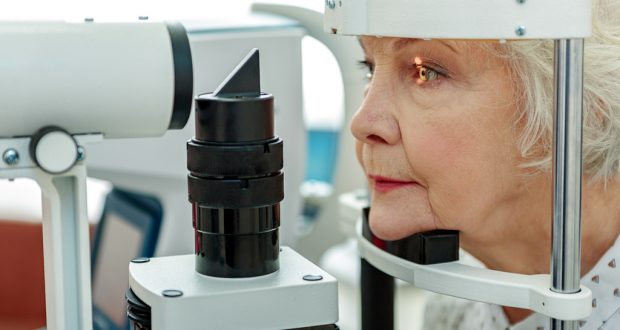By: Guest Author
Published: January 12, 2018
 Contributed by Meredith Rogers- Guest Contributor
Contributed by Meredith Rogers- Guest Contributor
Glaucoma encompasses a group of eye diseases that cause damage to the optic nerve, which connects the eye to the brain. This damage is often a result of an abnormally high amount of pressure in the eye. At first, glaucoma affects peripheral vision, and then becomes more widespread.
It’s one of the leading causes of blindness in the U.S., and can occur at any age, though it’s more common among adults over the age of 40 years. The most common type of glaucoma generally has no warning signs. It only develops gradually, and you might not even notice any change in your vision until it reaches an advanced stage.
Unfortunately, the vision loss caused by glaucoma cannot be recovered. It’s therefore important to go for regular eye checkups that include measuring your eye’s pressure. When glaucoma is recognized early enough, vision loss can be prevented or slowed down. And if you develop the condition, it’s highly likely that you’ll require treatments for the rest of your life.
Types of Glaucoma
Most cases of glaucoma occur in 4 forms:
- Open angle Glaucoma: this is the most common form of glaucoma. It’s caused when pressure builds up inside the eye, which then damages the optic nerve. The pressure usually rises when the clear fluid inside the frontal part of the eye penetrates freely through the drainage angle (an anatomical structure in the eye), but is slow to drain away.
- Normal tension glaucoma: for about 30% of the cases, the eye pressure remains normal, but the optic nerve is damaged by other factors. This form of glaucoma is generally more common among the East Asian people.
- Closed angle glaucoma: in lesser cases, the angle at the front of the eye is closed or narrowed. When the pressure rises rapidly, it can cause severe eye pain, blurry vision, nauseam and even seeing halos around lights.
- Pigmentary Glaucoma: pigment granules from the iris can build up inside the drainage channels, blocking or slowing down the fluid exiting the eye. Activities like jogging can stir up the pigment granules, and these are then deposited on the tubular structure and cause intermittent elevations of eye pressure.
What are the Dangers of Glaucoma?
Since chronic glaucoma can destroy your vision even before the signs and symptoms become apparent, it’s good to be aware of the risk factors. Here are the common risk factors for glaucoma:
- Being over 60 years of age
- Women are 2 times more likely to develop closed angle glaucoma than men
- High internal eye pressure, also called intraocular pressure
- Being Hispanic or Black
- Certain eye conditions like nearsightedness increase the risk
- Belonging to a family with a history of the condition
- Having had certain forms of eye surgery or eye injuries
- Suffering from certain medical condition like heart disease, diabetes, high blood pressure, and sickle cell anemia
- Taking corticosteroid medicine, particularly eye drops for prolonged periods of time
Preventing Glaucoma
While you might not be able to prevent glaucoma 100%, there are certain steps you can take to help you detect is early enough, slow its progress, and limit any vision loss.
Going for regular eye checkups: when comprehensive eye exams are conducted regularly, they can effectively detect glaucoma in its early stages before any irreversible damage occurs. As a rule of thumb, it’s good to go for a comprehensive eye exam every four years, starting at age 40 onwards, and every two years once you hit 65 years. If you’re at a high risk of developing glaucoma, you may need more frequent screening. So, ask your doctor to recommend a convenient screening schedule for you.
Exercise safely: moderate and regular exercising can help to prevent glaucoma by reducing eye pressure. If you’re at risk, consult your doctor for an appropriate exercise regimen.
Know the eye health history of your family: glaucoma generally tends to affect people in families. So, if you’re at an increased risk, you should make arrangements for more frequent eye examinations.
Taking glaucoma eyedrops as prescribed: taking glaucoma eyedrops can significantly lower the risk of high pressure in the eye progressing into glaucoma. For the eyedrops to be effective, they need to be used as regularly ass prescribed by the doctor, even when there are no symptoms.
Wearing eye protection: as we mentioned earlier, serious eye injuries can cause glaucoma. Wearing eye protection when performing activities such as playing high-speed racket sports or using power tools can help protect your eyes from severe injury in case of an accident.
Author’s Bio-
Meredith Rogers is a Registered Nurse and health writer that has witnessed many devastating stories that result from Glaucoma. She is a writer and editor at GeriatricNursing.org is determined to raise awareness about this horrible and secretive disease as a part of the Glaucoma Awareness Month.
The views expressed herein this article, written by a guest contributor, do not necessarily represent those of the Red Hot Mamas organization. The content is for informational purposes and should not substitute the advice of your doctor.
 Red Hot Mamas In Charge of Change.
Red Hot Mamas In Charge of Change.




